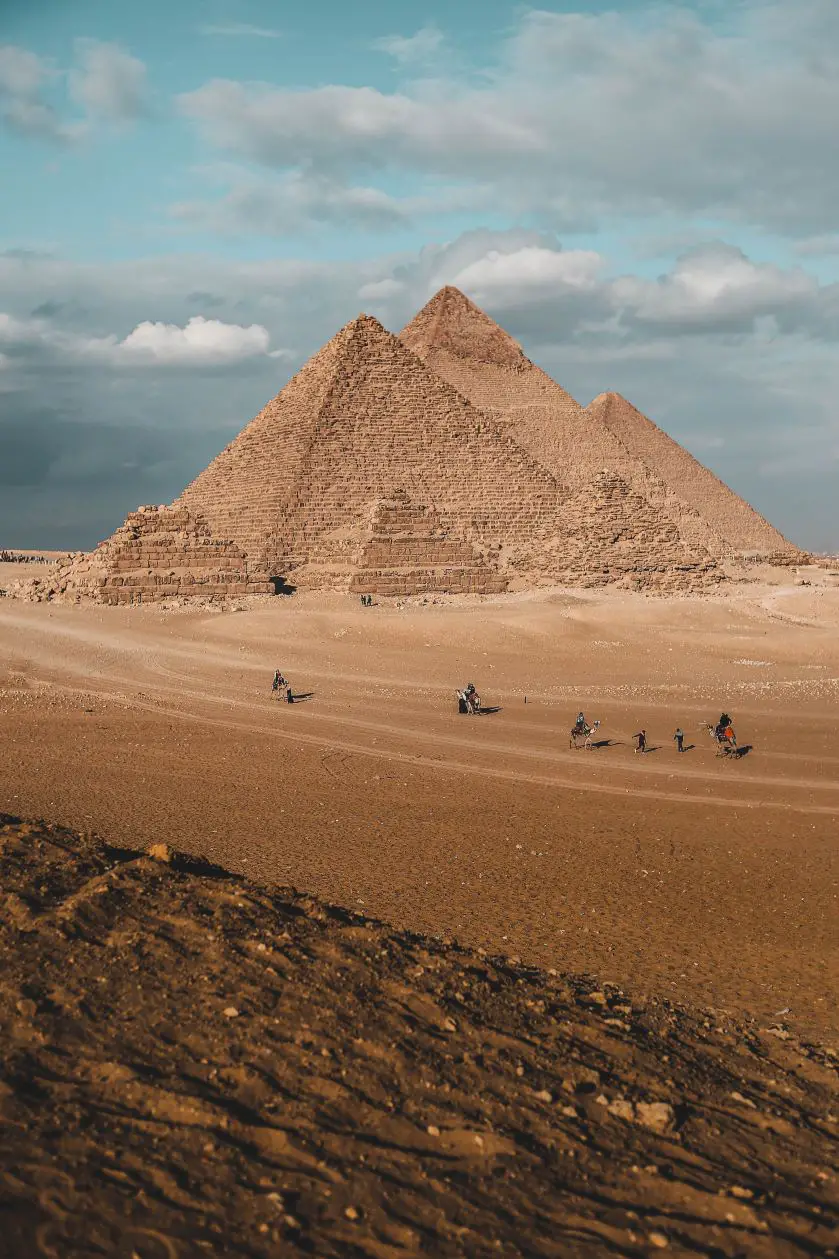
The pyramids of Egypt are one of the world’s most iconic structures, but have you ever wondered who built them? The answer is not as straightforward as you might think. In this article, we will explore the various theories and evidence surrounding the construction of the pyramids, from the traditional beliefs of ancient Egypt to modern-day scientific discoveries.
Table of Contents
The Traditional Beliefs
The ancient Egyptians believed that the pyramids were built by the pharaohs, who were considered to be living gods. According to this theory, the pharaohs commanded their subjects to construct the pyramids as a symbol of their divine power and eternal life. The pharaohs were believed to be buried inside the pyramids, along with their wealth and possessions, in order to ensure a smooth transition into the afterlife.
This theory is supported by inscriptions found on the walls of tombs and temples throughout Egypt. These inscriptions depict scenes of workers hauling giant blocks of limestone and granite, using ropes and wooden sledges. It’s clear that a massive workforce was required to construct the pyramids, but it’s unclear exactly how this workforce was organized and managed.
The Unions and Workers
In recent years, archaeologists have made some interesting discoveries that shed light on the social organization of the workers who built the pyramids. For example, they have uncovered evidence of large work camps near the construction sites, where workers lived in small mud-brick houses with their families.
It’s believed that the workers who built the pyramids were organized into unions or guilds, with each guild specializing in a particular task, such as quarrying, transporting, or carving the blocks of stone. The members of each guild were highly skilled and trained in their craft, and they passed their knowledge down from generation to generation.
It’s estimated that the workforce required to build the Great Pyramid of Giza alone would have numbered around 100,000 people. These workers were not slaves, as was previously believed, but rather ordinary Egyptians who were conscripted into service for a few months each year, during the flooding of the Nile when farming was impossible.
Moving Massive Stones
The construction of the pyramids was an engineering feat that still baffles scientists today. How did the ancient Egyptians move massive blocks of stone, some weighing as much as 80 tons, from quarries hundreds of miles away to the construction sites?
One theory is that the Egyptians used ramps to haul the stones up to the construction site. Archaeologists have uncovered evidence of ramps at several pyramid sites, but it’s unclear exactly how they were used. Another theory is that the Egyptians used a system of levers and pulleys to move the stones, although there is little evidence to support this theory.
The most recent theory involves water. A team of French and American scientists has proposed that the Egyptians used a system of canals and water locks to transport the blocks of stone from the quarries to the construction sites. The canals would have been filled with water during the Nile flooding season, and the blocks of stone could have been floated down to the construction sites.
Conclusion
The construction of the pyramids of Egypt remains one of the world’s greatest mysteries. While we may never know exactly how these massive structures were built, we do know that it required an enormous workforce, highly skilled craftsmen, and a sophisticated social organization. The theories surrounding the construction of the pyramids continue to evolve as new evidence is uncovered, and it’s likely that we will continue to be amazed by these ancient structures for centuries to come.